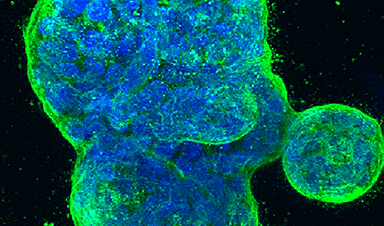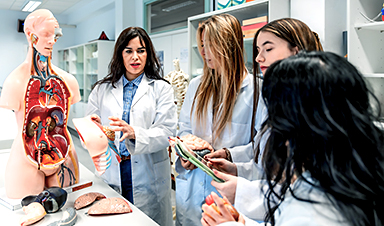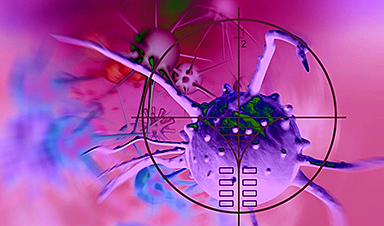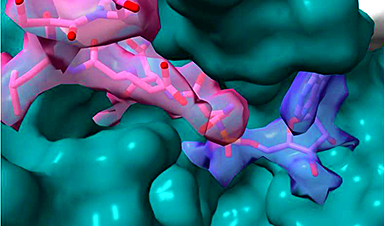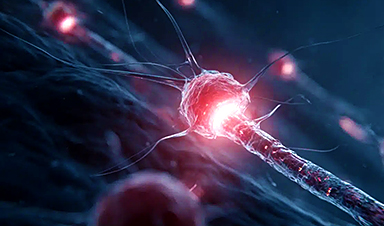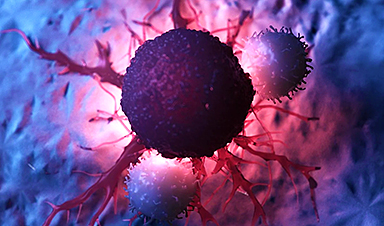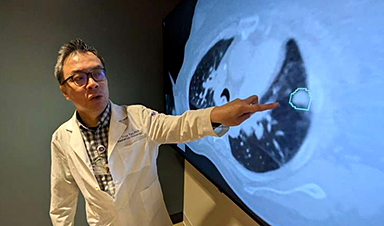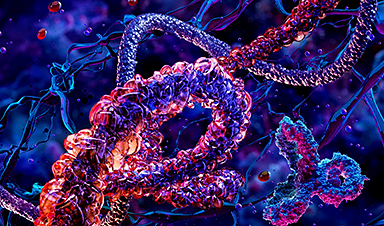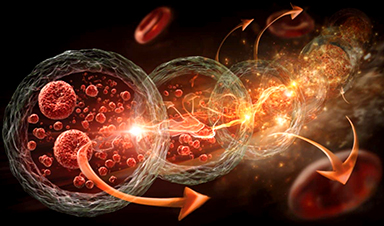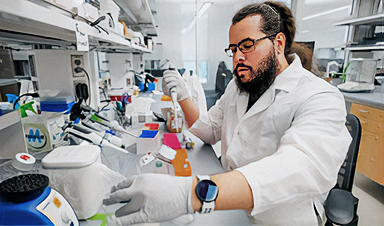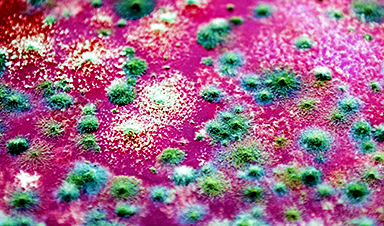Women worldwide could see better treatment with new AI technology, which enables better detection of damaged cells and more precisely predicts the risk of getting breast cancer, shows new research from the University of Copenhagen.
Breast cancer is one of the most common types of cancer. In 2022, the disease caused 670,000 deaths worldwide. Now, a new study from the University of Copenhagen shows that AI can help women with improved treatment by scanning for irregular-looking cells to give better risk assessment.
The study, published in The Lancet Digital Health, found that the AI technology was far better at predicting the risk of cancer than current clinical benchmarks for breast cancer risk assessment.
The researchers used deep learning AI technology developed at the University of Copenhagen to analyze mammary tissue biopsies from donors to look for signs of damaged cells, an indicator of cancer risk.
“The algorithm is a great leap forward in our ability to identify these cells. Millions of biopsies are taken every year, and this technology can help us better identify risks and give women better treatment,” says Associate Professor Morten Scheibye-Knudsen from the Department of Cellular and Molecular Medicine and senior author of the study.
Predicts cases of five times the risk of breast cancer
A core aspect of assessing cancer risk is looking for dying cells, caused by so-called cellular senescence. Senescent cells are still metabolically active but have stopped dividing. Previous research has shown that this senescent state can help suppress cancer development. However, senescent cells can also cause inflammation that can lead to tumor development.
By using deep learning AI to search for senescent cells in tissue biopsies, the researchers were able to predict the risk of breast cancer better than the Gail model, the current gold standard for assessing breast cancer risk.
“We also found that if we combine two of our own models or one of our models with the Gail score, we get results that are far better at predicting the risk of getting cancer. One model combination gave us an odds ratio of 4.70 and that is huge. It is significant if we can look at cells from an otherwise healthy biopsy sample and predict that the donor has almost five times the risk of developing cancer several years later,” says Indra Heckenbach, first author of the study.
Algorithm trained on ‘zombie cells’ can give better treatment
The researchers trained the AI technology on cells developed in cell culture that were intentionally damaged to make them senescent. The researchers then used the AI on the donor biopsies to detect senescent cells.
“We sometimes refer to them as zombie cells because they have lost some of their function, but they are not quite dead. They are associated with cancer development, so we developed and trained the algorithm to predict cell senescence. Specifically, our algorithm looks at how the cell nuclei are shaped, because the nuclei become more irregular when the cells are senescent,” explains Heckenbach.
It will still be several years until the technology is available for use at the clinic, but then it can be applied worldwide, as it only requires standard tissue sample images to do the analysis. Then, women around the globe can potentially use this new insight to get better treatment.
Scheibye-Knudsen adds, “We will be able use this information to stratify patients by risk and improve treatment and screening protocols. Doctors can keep a closer eye on high-risk individuals, they can undergo more frequent mammograms and biopsies, and we can potentially catch cancer earlier. At the same time, we can reduce the burden for low-risk individuals, e.g. by taking biopsies less frequently.”
More information: Indra Heckenbach et al, Deep learning assessment of senescence-associated nuclear morphologies in mammary tissue from healthy female donors to predict future risk of breast cancer: a retrospective cohort study, The Lancet Digital Health (2024). www.thelancet.com/journals/lan … (24)00150-X/fulltext
Image Credit:
News
Repurposed drugs could calm the immune system’s response to nanomedicine
An international study led by researchers at the University of Colorado Anschutz Medical Campus has identified a promising strategy to enhance the safety of nanomedicines, advanced therapies often used in cancer and vaccine treatments, [...]
Nano-Enhanced Hydrogel Strategies for Cartilage Repair
A recent article in Engineering describes the development of a protein-based nanocomposite hydrogel designed to deliver two therapeutic agents—dexamethasone (Dex) and kartogenin (KGN)—to support cartilage repair. The hydrogel is engineered to modulate immune responses and promote [...]
New Cancer Drug Blocks Tumors Without Debilitating Side Effects
A new drug targets RAS-PI3Kα pathways without harmful side effects. It was developed using high-performance computing and AI. A new cancer drug candidate, developed through a collaboration between Lawrence Livermore National Laboratory (LLNL), BridgeBio Oncology [...]
Scientists Are Pretty Close to Replicating the First Thing That Ever Lived
For 400 million years, a leading hypothesis claims, Earth was an “RNA World,” meaning that life must’ve first replicated from RNA before the arrival of proteins and DNA. Unfortunately, scientists have failed to find [...]
Why ‘Peniaphobia’ Is Exploding Among Young People (And Why We Should Be Concerned)
An insidious illness is taking hold among a growing proportion of young people. Little known to the general public, peniaphobia—the fear of becoming poor—is gaining ground among teens and young adults. Discover the causes [...]
Team finds flawed data in recent study relevant to coronavirus antiviral development
The COVID pandemic illustrated how urgently we need antiviral medications capable of treating coronavirus infections. To aid this effort, researchers quickly homed in on part of SARS-CoV-2's molecular structure known as the NiRAN domain—an [...]
Drug-Coated Neural Implants Reduce Immune Rejection
Summary: A new study shows that coating neural prosthetic implants with the anti-inflammatory drug dexamethasone helps reduce the body’s immune response and scar tissue formation. This strategy enhances the long-term performance and stability of electrodes [...]
Scientists discover cancer-fighting bacteria that ‘soak up’ forever chemicals in the body
A family of healthy bacteria may help 'soak up' toxic forever chemicals in the body, warding off their cancerous effects. Forever chemicals, also known as PFAS (per- and polyfluoroalkyl substances), are toxic chemicals that [...]
Johns Hopkins Researchers Uncover a New Way To Kill Cancer Cells
A new study reveals that blocking ribosomal RNA production rewires cancer cell behavior and could help treat genetically unstable tumors. Researchers at the Johns Hopkins Kimmel Cancer Center and the Department of Radiation Oncology and Molecular [...]
AI matches doctors in mapping lung tumors for radiation therapy
In radiation therapy, precision can save lives. Oncologists must carefully map the size and location of a tumor before delivering high-dose radiation to destroy cancer cells while sparing healthy tissue. But this process, called [...]
Scientists Finally “See” Key Protein That Controls Inflammation
Researchers used advanced microscopy to uncover important protein structures. For the first time, two important protein structures in the human body are being visualized, thanks in part to cutting-edge technology at the University of [...]
AI tool detects 9 types of dementia from a single brain scan
Mayo Clinic researchers have developed a new artificial intelligence (AI) tool that helps clinicians identify brain activity patterns linked to nine types of dementia, including Alzheimer's disease, using a single, widely available scan—a transformative [...]
Is plastic packaging putting more than just food on your plate?
New research reveals that common food packaging and utensils can shed microscopic plastics into our food, prompting urgent calls for stricter testing and updated regulations to protect public health. Beyond microplastics: The analysis intentionally [...]
Aging Spreads Through the Bloodstream
Summary: New research reveals that aging isn’t just a local cellular process—it can spread throughout the body via the bloodstream. A redox-sensitive protein called ReHMGB1, secreted by senescent cells, was found to trigger aging features [...]
AI and nanomedicine find rare biomarkers for prostrate cancer and atherosclerosis
Imagine a stadium packed with 75,000 fans, all wearing green and white jerseys—except one person in a solid green shirt. Finding that person would be tough. That's how hard it is for scientists to [...]
Are Pesticides Breeding the Next Pandemic? Experts Warn of Fungal Superbugs
Fungicides used in agriculture have been linked to an increase in resistance to antifungal drugs in both humans and animals. Fungal infections are on the rise, and two UC Davis infectious disease experts, Dr. George Thompson [...]
